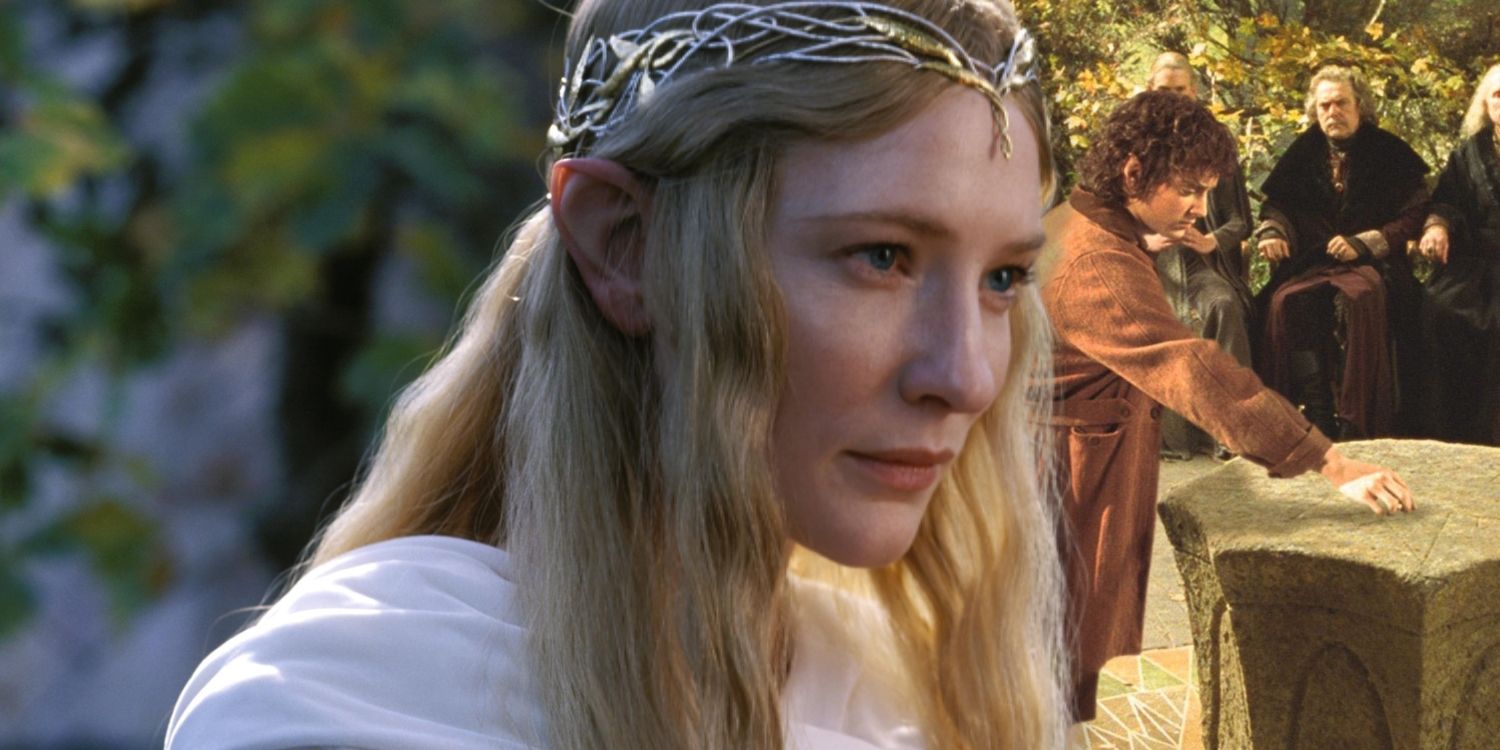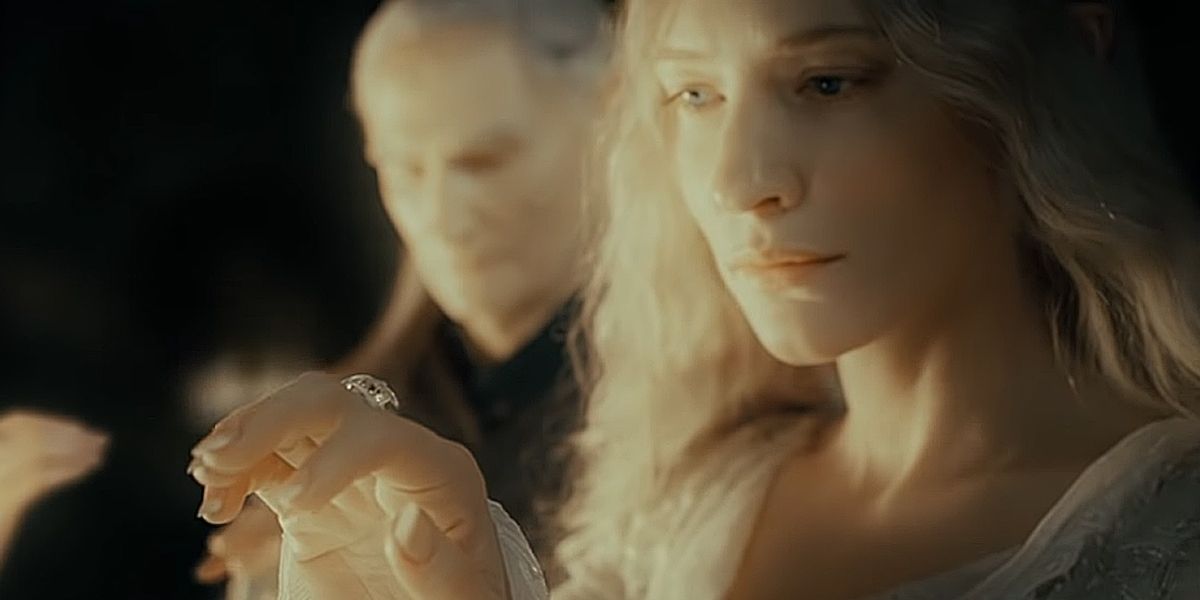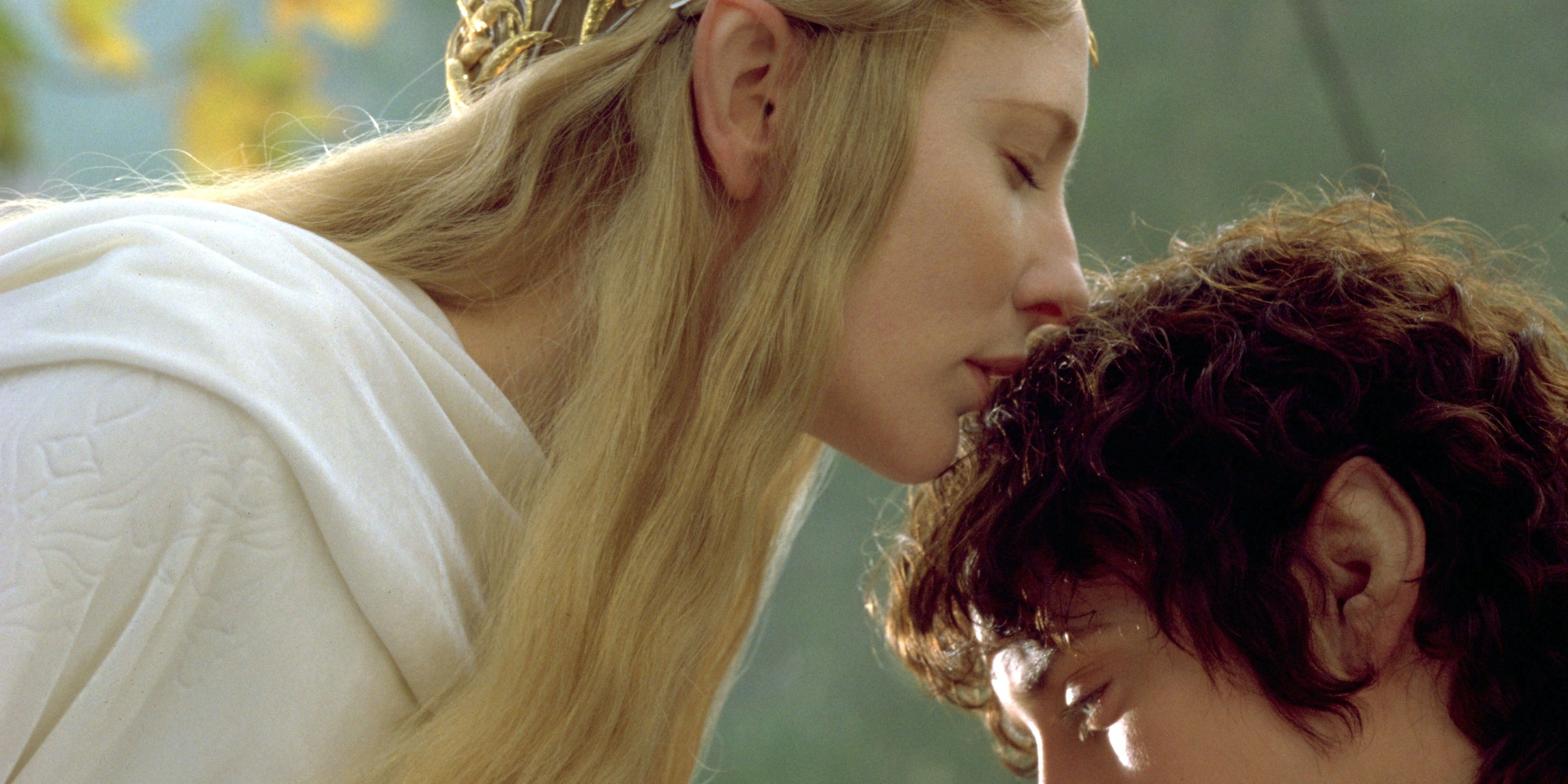The Lord of the Rings series is one of the greatest adaptations in film history, and its lasting legacy proves that the epic saga isn’t held back by its lengthy runtime. Telling such a monumental story still comes with its risks, however, one of which is that troublesome plot holes will find their way into the narrative. But J.R.R. Tolkien’s Middle-Earth folklore is so carefully-crafted that there’s often an in-universe explanation for even the slightest of purported errors, even if it means fans sometimes have to read the books to get the full story.
In the first installment of both the book and film series, the Council of Elrond is held to decide what should be done with the One Ring. This is where the audience meets several of the story’s primary characters, nine of whom would form the titular Fellowship of the Ring. But one important figure is missing through the entire ordeal. Galadriel is a great Elf who should surely be present during such serious deliberations, as her wisdom and insight would be very valuable to the group. But she simply isn’t there, and neither the book nor the film explains why.
Of course, it would be ridiculous to have every significant character appear at the Council, but Galadriel is one of the most powerful figures in all Middle-earth, and a ring-bearer herself. The Council of Elrond holds the fate of the world in its hands, and yet she remains conspicuously absent. She herself had previously founded The White Council to combat Dol Guldur, so she understands the necessity of such foundations as well as her high standing within the hierarchy of Middle-Earth. It doesn’t seem true to her character to ignore an event as weighty as this.
Tolkien’s own appendices to The Lord of the Rings give another reason why Galadriel should have attended the Council of Elrond. According to the canonical timeline of the Third Age, during the final meeting of the White Council, Saruman claimed that the One Ring had been lost to the sea. When Galadriel learned of the ring’s return (and she likely knew the truth long before Frodo arrived at Rivendell), she would surely have reason to revive the White Council herself, because their task had not been completed. But if that wasn’t part of her plan, she could have at least advised the Council of Elrond, using her foresight to keep them from making fatal mistakes. But who’s to say she had to meet with the group physically to make her voice heard?
Galadriel might have communicated with the Council using her own methods. For instance, she’s known to be able to speak with others through telepathy. In The Return of the King, Tolkien writes of a meeting between Galadriel, Elrond, and Gandalf: “they did not move or speak with mouth, looking from mind to mind.” Gandalf and Elrond were both at the Council, and therefore she could have spoken to either of them without anyone else knowing. Another example from the books is when the Fellowship meets with Galadriel and Celeborn after losing Gandalf. It’s clear that the Elves have received news of the Council, and know that nine companions were chosen. Celeborn, seeing only eight, worries that this discrepancy means there has been a communication issue because “Elrond is far away, and darkness gathers between us.” But Galadriel assures him “there was no change of counsel”, despite knowing nothing of Gandalf’s fate. This seems to indicate that she is still very much in touch with Elrond.
Of course, there’s another big reason why Galadriel might not have attended the Council: she simply might not have been ordained to. While Jackson’s film changes the Council of Elrond to make it look like a pre-arranged meeting, in the book it was a seemingly random assembly. Its members had traveled to meet with Elrond for different reasons, and this became an opportunity to discuss the matter of the ring. But Elrond doesn’t see this as mere coincidence, telling his visitors: “You have come and are here met, in this very nick of time, by chance as it may seem. Yet it is not so. Believe rather that it is so ordered that we, who sit here, and none others, must now find counsel for the peril of the world.” Elrond believed that the specific group that he was dealing with would be the ones to save Middle-Earth, even if that meant that they wouldn’t be able to benefit from Galadriel’s insight.
But setting aside all the canonical reasons why Galadriel wouldn’t have appeared at the Council of Elrond, there’s another possibility that’s much easier to understand. When Tolkien wrote the chapter “The Council of Elrond,” the character of Galadriel didn’t even exist yet. She makes no appearance in his early writing, and she isn’t even mentioned in The Lord of the Rings until the Fellowship makes it to at Lothlórien. In Tolkien’s preface to the book, he describes the process of creating the novel and notes that he “halted for a long while” once he reached the point where the Fellowship arrives in the Mines of Moria. It would be another year or two before he resumed writing, and finally created the Lord and Lady of the Galadhrim, also known as Celeborn and Galadriel.
Though Tolkien was known to go back and rewrite portions of his earlier work to ensure continuity, it's possible that he just didn't see Galadriel back then as the supreme figure she is today. This is because much of what is known about Galadriel's backstory comes from Tolkien's post-Lord of the Rings work, primarily the Unfinished Tales, and parts of it even contradict his earlier writing. So even if her role in his best-known narrative is far too small, she would ultimately become one of the strongest, best-written characters in Tolkien's legendarium, and that's great news for fans.



